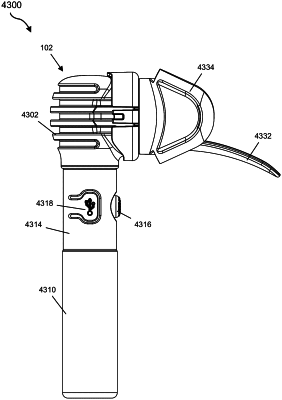| CPC A61N 5/0603 (2013.01) [A61N 5/062 (2013.01); A61N 5/0624 (2013.01); A61N 2005/0604 (2013.01); A61N 2005/0606 (2013.01); A61N 2005/0658 (2013.01)] | 19 Claims |

|
1. A method comprising:
providing an illumination device configured to emit light with a light characteristic comprising a peak wavelength in a range from 410 nanometers (nm) to 440 nm and a full width half maximum that is less than or equal to 40 nm, the illumination device comprising a light source, a light guide forming a hollow light transmissive pathway configured to receive the light from the light source, and a light guide positioner configured such that the light guide extends through the light guide positioner to secure at least a portion of the light guide past the light guide positioner within a user's oral cavity; and
irradiating tissue accessible from the user's oral cavity with the light at a dose up to 120 joules per square centimeter (J/cm2) to induce a biological effect, wherein the biological effect comprises altering a local immune response by upregulating interleukin 1 alpha (IL-1α) molecules and downregulating interleukin 6 (IL-6) molecules within the tissue.
|